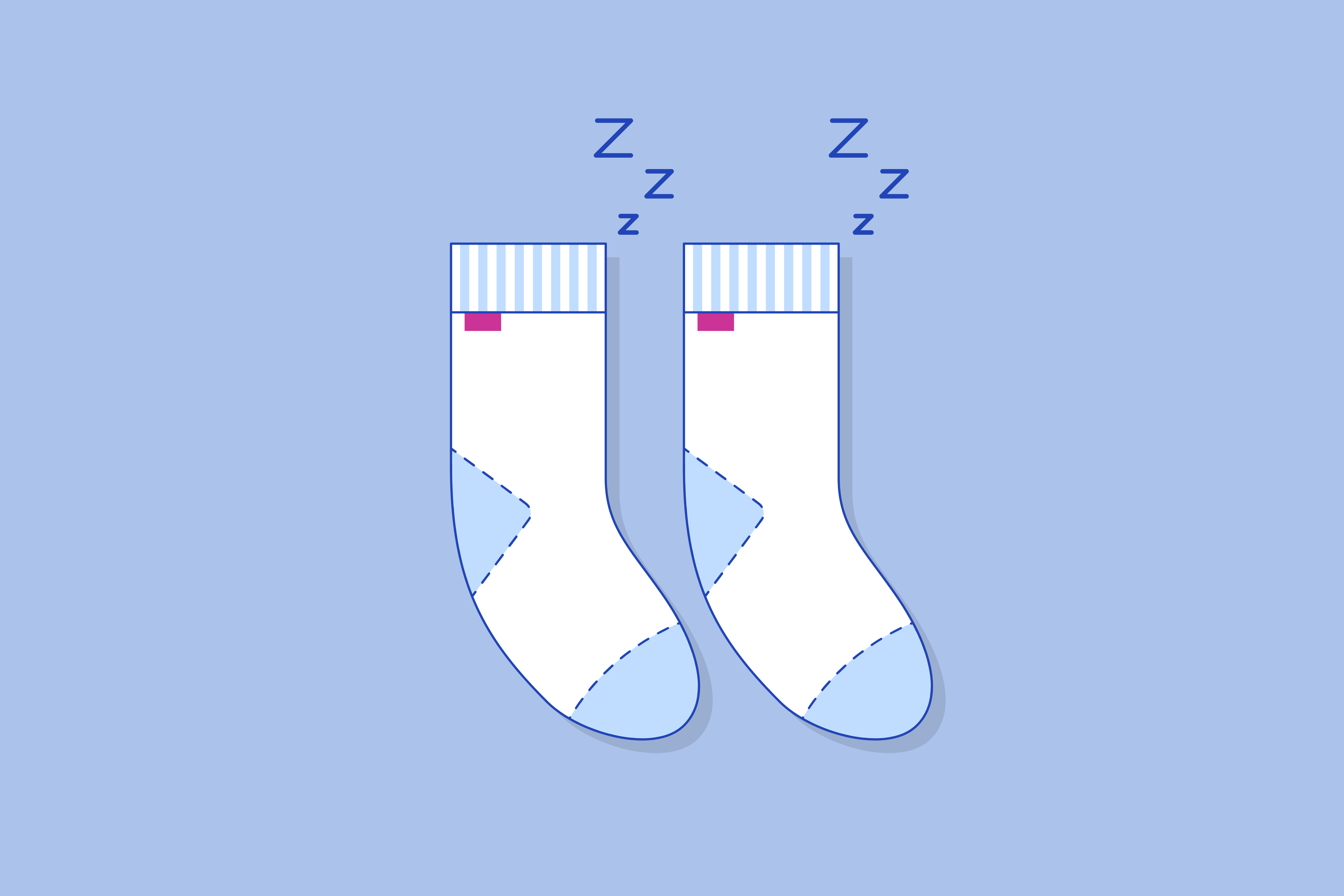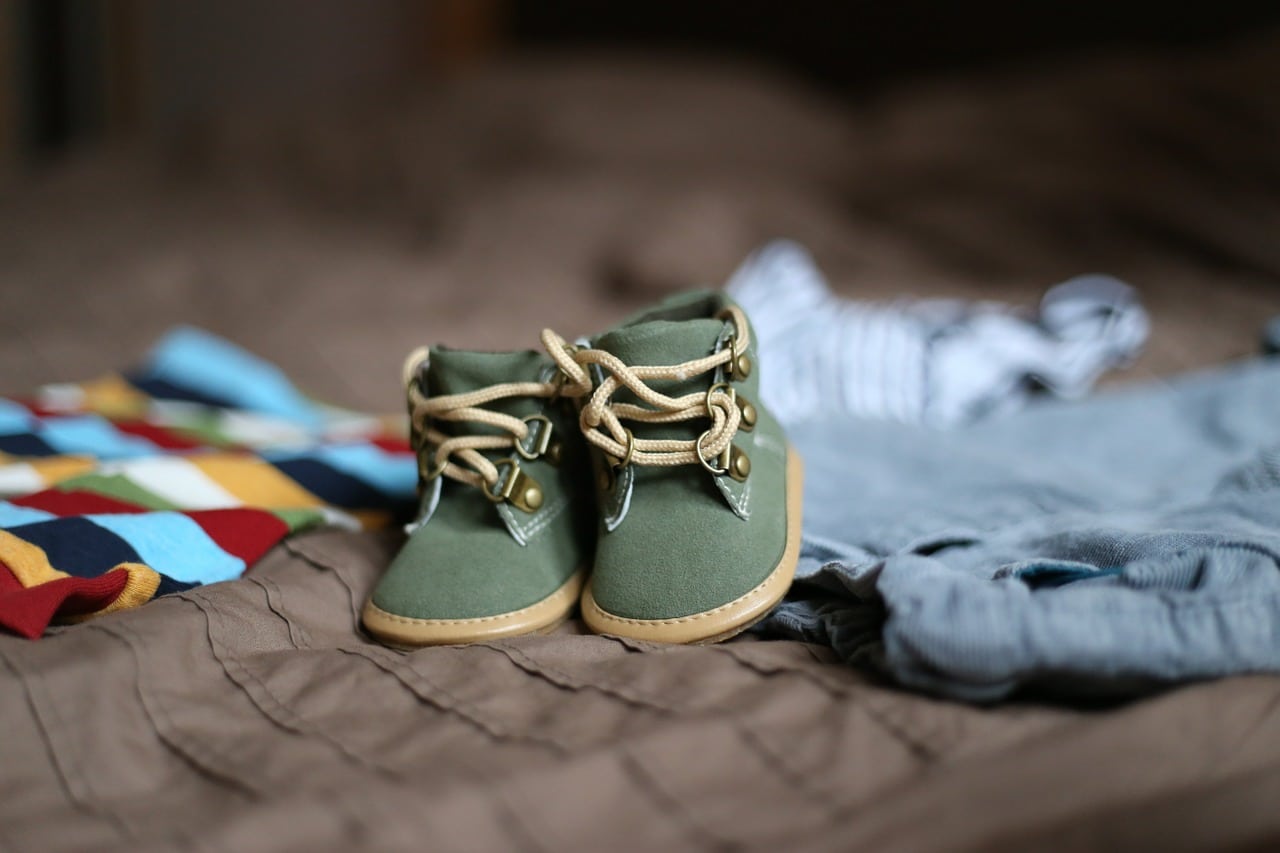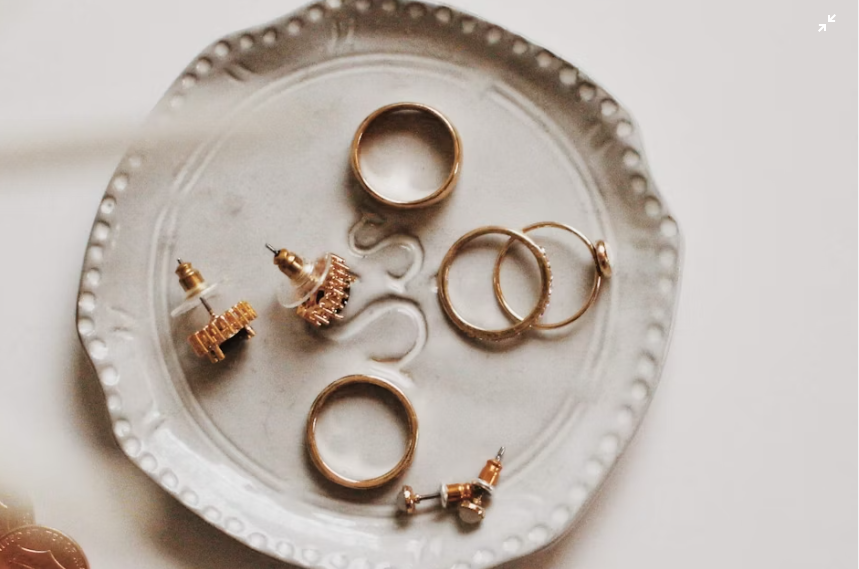Key Takeaways
- Body Temperature and Sleep: Body temperature plays a crucial role in sleep quality. Throughout the sleep cycle, body temperature varies, dropping during the non-rapid eye movement (NREM) sleep phase and rising during rapid eye movement (REM) sleep. Managing body temperature, especially before bedtime, can contribute to better sleep.
- Socks on for Better Sleep: Wearing socks to bed acts as a thermal conductor, helping to maintain a consistent temperature for your feet. This can prevent fluctuations in temperature that might disrupt your sleep cycle. Opt for breathable, natural materials and avoiding overly tight socks ensures comfort and safety.
- Additional Sleep Strategies: Managing body temperature for better sleep goes beyond wearing socks. Other effective strategies include maintaining a cool bedroom environment, using breathable bedding, taking a warm foot bath before sleep, and staying hydrated. Avoiding heavy meals and strenuous exercise close to bedtime can prevent body temperature spikes that disrupt sleep.
A good night’s sleep is a crucial component of a healthy lifestyle. Yet, factors like stress, environment, and even what we wear to bed can greatly impact our sleep quality.
One topic that’s sparked curiosity and controversy alike is the relationship between ‘feet and sleep.’
Is it beneficial to wear socks to bed, or is it simply a matter of personal preference? While it might seem like an odd connection, a recent study Verified Source National Library of Medicine (NIH) World’s largest medical library, making biomedical data and information more accessible. View source has found that sleeping with socks on had positive effects on sleep quality by shortened sleep onset latency, lengthed sleep time, and lessened awakenings. Let’s dive into the details.
Best Amerisleep Alternatives to Wearing Socks
Quick Guide: A 30-Second Summary
| Best Sheets for Staying Warm | Amerisleep Bamboo Sheets |
| Best Comforter for Staying Warm | Amerisleep Recover+ Comforter |
How Does Body Temperature Affect Your Sleep?
Body temperature isn’t a constant. It varies throughout the day and night, regulated by a process known as thermoregulation. Verified Source Centers for Disease Control and Prevention (CDC) The United States’ health protection agency that defends against dangers to health and safety. View source
Your body’s core temperature isn’t the same as your skin temperature. Core temperature refers to the heat within your body’s vital organs, while skin temperature is the temperature at the surface of your body. Core temperature is consistent metric, Verified Source National Library of Medicine (NIH) World’s largest medical library, making biomedical data and information more accessible. View source while skin temperature is more prone to fluctuations from environmental factors and such. However, both are physiologically regulated by your body, and they are correlated to each other.
Now, what does body temperature have to do with sleep? A lot, actually. Sleep isn’t a passive state. It’s a dynamic process closely tied to your body’s internal rhythms, including temperature. Verified Source National Library of Medicine (NIH) The United States’ health protection agency that defends against dangers to health and safety. View source Your core body temperature decreases as you sleep, marking the transition from wakefulness to slumber during slow wave sleep stages.
Understanding your body’s temperature variations during different sleep cycles is key. When you enter the non-rapid eye movement (NREM) sleep phase, your body temperature drops, reaching its lowest point during deep sleep. It starts to rise during rapid eye movement sleep or REM sleep, the stage associated with vivid dreaming.
So, in essence, managing your body temperature, especially before bedtime, could be a gateway to better sleep and ease in falling asleep. It’s a dance between biology and environment (air temperature), between your feet and sleep. As we’ll soon discover, socks could be a simple yet significant accessory in this intricate ballet.
What Is the Connection Between Feet and Sleep?
Your feet might be the key to unlocking a better night’s sleep. Surprising, right? Here’s why.
Your feet, with their high volume of blood vessels, play a significant role in heat regulation. Warming your feet before bed can signal to your brain that it’s time to sleep, as one study showed with a footbath Verified Source National Library of Medicine (NIH) World’s largest medical library, making biomedical data and information more accessible. View source It’s all about distribution – warm feet cause dilation of the blood vessels, a process called vasodilation, which tells the brain that it’s bedtime.
Essentially, it’s a heat-exchange mechanism that helps lower your core body temperature.
But is there a science to back up this ‘feet and sleep’ connection? Absolutely. In a study published in the journal “Nature,” researchers discovered that warm feet and hands were the best predictors of rapid onset of sleep. The findings suggested that the degree of dilation of blood vessels in the skin of the hands and feet was the most accurate physiological predictor for the rapid onset of sleep.
Sleep deprivation can also affect how our body regulates Verified Source Oxford Academic Research journal published by Oxford University. View source skin temperature. In other words, it can be a cyclical struggle if you don’t do what is needed to enjoy a cozy, comfy temperature for sleep. Plus, complicating this struggle for sleep is factors likecool or warm weather Verified Source National Library of Medicine (NIH) World’s largest medical library, making biomedical data and information more accessible. View source that can make it trickier to get comfortable.
Therefore, the connection between your feet and sleep isn’t just a theory. It’s a scientifically-proven fact. Whether it’s through a warm foot bath or slipping on a pair of socks, warming your feet can indeed help you fall asleep faster.
Can Wearing Socks to Bed Improve Sleep Quality?
Socks are more than just fabric foot coverings. They act as thermal conductors, helping to balance out your body’s temperature for sleep. Their ability to retain heat aids in keeping your feet at an ideal and consistent temperature, which could otherwise fluctuate throughout the night and disrupt your sleep cycle.
“The synchronization of sleep-wake and circadian body temperature rhythm suggests that local skin warming may be effective for inducing good sleep and indeed there is data in support of this,” explains Dr. Nayantara Santhi. “Distal body sites like feet and hands function as heat exchangers in humans and their warming has been shown to benefit sleep. This is seen primarily in sleep onset latency.”
Socks not only help you fast-track your journey to dreamland but also maintain a state of deep sleep. By keeping your feet warm and cozy, socks can help Verified Source National Library of Medicine (NIH) The United States’ health protection agency that defends against dangers to health and safety. View source prevent mid-sleep awakenings that are often triggered by cold feet or temperature drops.
Moreover, socks come to the rescue for those who suffer from sleep disorders or conditions that could lead to frequent sleep disruptions like:
- Raynaud’s disease, where it’s important to stay warm. Verified Source National Library of Medicine (NIH) World’s largest medical library, making biomedical data and information more accessible. View source
- Chronic cold feet such as those from vasospastic syndrome. Verified Source National Library of Medicine (NIH) World’s largest medical library, making biomedical data and information more accessible. View source
The extra layer of warmth from the socks can help manage these issues, enabling a more restful night’s sleep. There are other methods to try as well, such as warm showers Verified Source National Library of Medicine (NIH) World’s largest medical library, making biomedical data and information more accessible. View source for sleep.
Additional Tips to Warm Your Feet for Better Sleep
The type of socks you choose matters when it comes to staying warm in bed. Opt for socks made of natural, breathable materials like cotton, merino wool, or bamboo. These fabrics can help regulate temperature, keeping your feet comfortably warm without overheating. Avoid materials that trap moisture, as damp feet can disrupt your sleep.
In addition to wearing socks, there are other effective methods to keep your feet warm for a better night’s sleep. Here are some tips:
- Consider a warm foot bath before sleep. This relaxing routine can aid in warming your feet and encouraging sleep-inducing vasodilation. Just ensure the water isn’t too hot, a gentle warmth is enough.
- Other non-sock-related methods can also be helpful. For instance, using a hot water bottle or heated blanket can provide extra warmth. Just ensure it’s at a safe temperature, and remember to turn off any electric heating devices before you fall asleep.
- Lastly, consider underfloor heating or warmer bedding, especially during the colder months. These options help maintain a warm, sleep-friendly environment.
Downsides to Sleeping With Socks On
As with most things in life, even sleeping with socks on isn’t a one-size-fits-all solution. There could be instances where it may not be beneficial or even comfortable. For example, if you’re battling a fever, adding extra layers like socks could cause your body to overheat, potentially worsening your condition.
Similarly, if you naturally run hot or live in a warm climate, wearing socks might make you feel too warm and disrupt your sleep. Choosing the wrong type of socks can also backfire. Socks that are too tight can restrict circulation, while synthetic materials can trap moisture, potentially leading to foot health issues like athlete’s foot.
For those who choose to sleep with socks on, it’s crucial to take certain precautions. Always opt for clean socks to avoid bacterial growth, especially as you want to minimize bacteria on the bed and your body. Ensure they’re the right fit, not too tight or too loose. Choose breathable materials to prevent overheating or moisture buildup.
Should I Wear Compression Socks to Bed?
Yes, you technically can, but this isn’t usually recommended. While it’s generally not harmful to wear compression garments while sleeping for short periods, there is also no significant reason to do so.
See, compression socks are most beneficial when you’re up and moving, as the pressure from the socks helps improve blood circulation in your legs, counteracting the effects of gravity. However, when you lie down or sleep, the effect of gravity is reduced. So wearing compression socks during these times may not provide significant benefits.
Instead, it’s good to give your feet a break and take the compression socks off at night, unless a healthcare professional tells you to do otherwise. Taking them off at night allows your legs to have a break and gives your skin a chance to breathe.
You can apply lotion to your legs for added comfort during this time, as part of your nighttime skin routine.
What About Sleeping with Feet Uncovered?
Not everyone wants to sleep with socks on, and some don’t even like to keep them fully beneath their sheets. For example, many sleep with a foot sticking out from under their sheets. Our body temperature naturally fluctuates during sleep, and sticking a foot out from under the covers can help regulate body heat.
If you feel too warm, exposing your foot to the cooler air can dissipate heat and make you more comfortable.
FAQs
Why does body temperature decrease before sleep?
Body temperature decreases before sleep as part of our natural circadian rhythm. This decrease signals to our body and brain that it’s time for sleep. It’s a form of internal communication aligning our physiological processes with the external environment to promote rest and recovery during sleep.
What kind of socks are best for sleeping?
Socks made of breathable, natural materials like cotton, merino wool, or bamboo are best for sleep. They help maintain a comfortable temperature and prevent overheating. The socks should also be clean, well-fitted, and not too tight to ensure proper blood flow and optimal sleep comfort.
Can wearing socks to bed help with specific sleep disorders?
Yes, wearing socks to bed can help with certain sleep disorders. For those with cold feet or poor circulation, like Raynaud’s disease or restless leg syndrome, a prevalent sleep disorder, socks can provide needed warmth and comfort and aid in better sleep by preventing mid-sleep awakenings caused by cold discomfort.
Are there any health risks associated with sleeping with socks on?
While generally safe, sleeping with socks on could pose risks if they’re too tight, disrupting circulation, or if they’re made from non-breathable material, causing overheating or moisture buildup. These could lead to interrupted sleep or foot health issues like athlete’s foot. Always choose breathable, well-fitted socks for sleep.
What are other effective strategies to manage body temperature for better sleep?
Apart from wearing socks, other strategies include maintaining a cool bedroom environment, using breathable bedding, taking a warm bath before bed, and staying hydrated. Avoiding heavy meals and strenuous exercise close to bedtime can also prevent body temperature spikes that disrupt sleep. Each strategy contributes to an ideal sleep environment.
Conclusion
In essence, wearing bed socks could be a powerful tool in your toolkit for better sleep hygiene. It’s a straightforward yet effective strategy for creating the perfect internal and external sleep environment. So if you’re seeking an easy way to enhance your sleep quality, slipping into a pair of socks before bed might be worth a try.
About the author
April Mayer is a sleep expert and writer with a degree in exercise physiology. She has dedicated her career to exploring the relationship between sleep and productivity. Her insightful articles, such as "The Surprising Way Your Mood Might Be Messing With Your Productivity" and "Wake Up to More Productive Mornings," have been featured in reputable publications like Forbes, Greatist, Real Homes, Thrillist, Tom's Guide, and Eat This, Not That. With a passion for helping others lead more productive lives through restful sleep, April offers valuable expertise on foods and vitamins for better sleep. As a trusted member of the Early Bird team since March 2020, she continues to provide informative and well-researched content.
View all posts





